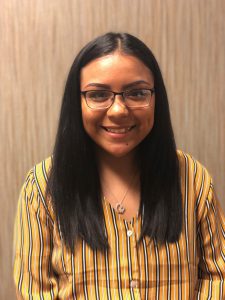ACT recently hosted a convening, which gathered together several postsecondary institutions who are participating in the U.S. Department of Education’s Pell Grants Dual Enrollment Experimental Sites initiative. This multi-year initiative allows a selection number of postsecondary institutions to award Pell Grants to low-income, high school students in dual enrollment programs. ACT, along with economists from Stanford University, is conducting the evaluation of this one-of-its-kind initiative. The hope is that, if there are positive outcomes, it could be an important resource for families. We interviewed two students about their experiences with the program and asked for their thoughts, below is our first student’s story.
 How did you hear about dual enrollment? Would you have enrolled in the dual enrollment course without receiving a federal Pell Grant?
How did you hear about dual enrollment? Would you have enrolled in the dual enrollment course without receiving a federal Pell Grant?
My school counselor, Mrs. Bearden, told my mother about the dual credit enrollment program during my first year at Early as a sophomore. I would have enrolled in the dual credit classes either way, but the federal Pell Grant helped tremendously, being that my mother and I didn’t have to stress about finding extra money or getting a job to help pay for the classes I was taking.
Had you heard of FASFA prior to enrolling in your dual enrollment program and how it is used?
I had heard of the Free Application for Student Aid (FAFSA) before, but didn’t know that it was associated with the Pell Grant or how to fill it out. Luckily, my mother and I had someone help us out with the process. I am extremely grateful that the dual credit enrollment opportunity was offered to me and even more so, that I was able to afford it with the help of the Federal Pell Grant.
Do you feel like you were academically ready for the course? What was the biggest adjustment?
I definitely feel that I was ready to step up to college level classes. Because my dual credit class was online, time management and being able to prioritize was the most difficult thing to do because of other extracurricular activities. It only takes a matter of time to get used to managing my time, though. I have told many of my friends and family members about the advantages and issues with being in a dual credit class. For example, some advantages are being able have a smoother transition from high school to college because of the exposure to the work ethic college-level students have.
What would you tell your friends, siblings, and other students about dual enrollment courses?
When it comes to credits, students have the opportunity to go into their freshman year of college with some of their necessary credits earned and classes completed while still in high school. You are able to kill two birds with one stone, as the saying goes. The only issue in choosing a dual credit course is if the student isn’t ready to enter the college level. That can be because of time, other extracurricular activities, or feeling overwhelmed. I really love being in dual credit classes because it’s easy and with the help of the Pell Grant, affordable. I see no reason why anyone would turn down an opportunity like this.
Victoria Guerrero is a junior at Early High School in Early, Texas. She hopes to graduate college with a bachelor’s degree in nursing and become a nurse practitioner.
